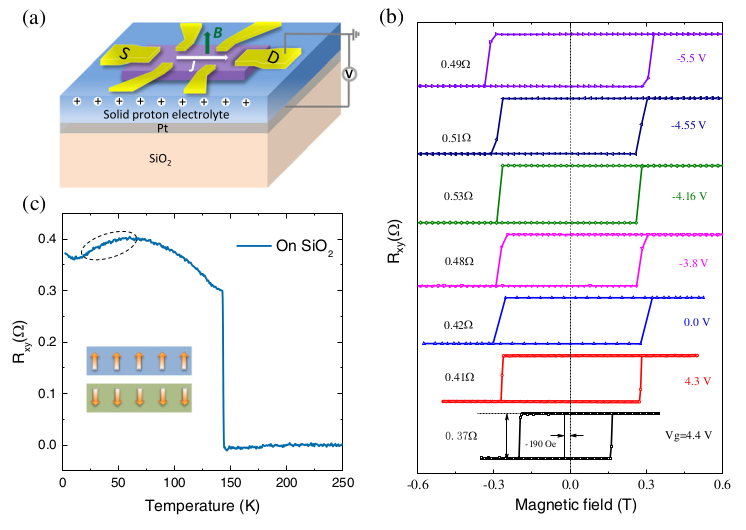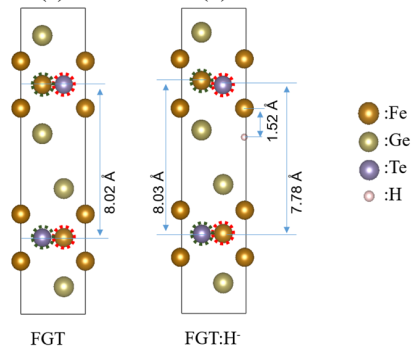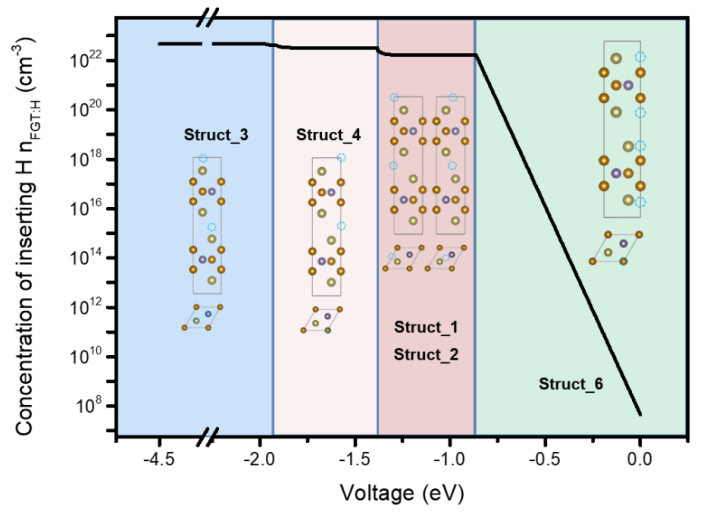In cooperation with The Royal Melbourne Institute of Technology (RMIT) in Australia, the faculty of our institute has made important progress in the research of two-dimensional magnetic materials, and South China University of Technology is the second completion unit of the achievement. This theoretical and experimental work is the first to demonstrate that the interlayer coupling of two-dimensional van der Waals materials can be greatly regulated by proton injection, thus opening up new applications of van der Waals materials and improving the realisation of their device applications. The work, published online July 22 in Physical Review Letters, was recommended by editors (about one-fifth of the journal's papers are recommended by editors). The experimental part of this study was carried out by Professor LAN Wang's team from RMIT, Australia (PhD student Guolin Zheng was the first author), and the theoretical calculation part was carried out by Professor Yujun Zhao's team from the School of Physics and Optics, RMIT, Australia (PhD student Wenqiang Xie was the co-first author).

Screenshot of wen website
Van der Waals materials are composed of many two-dimensional layered structures, among which graphite is a typical representative. These two-dimensional layered structures are easily separated by a very weak electrostatic bond, such as the use of transparent tape method to prepare graphene. But such weak binding forces also limit the use of these materials in many fields. If the interlayer coupling can be improved, its applications in two-dimensional multiferroic devices and high temperature devices with quantum anomalous Hall effect will be expanded. This collaborative study shows that proton injection can significantly enhance the coupling between the layered structures of Fe3 GeTe2 (FGT), a van der Waals material. By increasing the gate voltage to inject a large number of protons, the exchange bias of magnetic field and zero magnetic field is also realized in FGT, indicating that proton injection can enhance the interlayer coupling while obtaining surprising new phenomena. This method also provides a reference for expanding the application of other van der Waals materials.

Schematic diagram of experimentally measured Hall rod device (a), ferromagnetism in FGT sheet under gate voltage regulation (b), and residual Hall resistance with temperature.
Professor Zhao Yujun and his team in our university have found through multiple model simulations based on density functional theory that electrons actually exist in the form of negative ions after proton injection into FGT. Considering van der Waals forces, it was confirmed that the interlayer coupling of FGT materials would be significantly enhanced by hydrogen ion implantation. It is not easy to determine experimentally how much hydrogen ions can be injected into FGT at different gate voltages. In the calculation of defect formation energy, the theoretical team comprehensively considered multiple factors such as voltage, ambient pH value and vibration entropy, and obtained hydrogen ion concentration in FGT under different gate voltages. The effect of hydrogen ion implantation on magnetic coupling and magnetic anisotropy of FGT system is further analyzed, which strongly supports the experimental findings.

Theoretical simulation structure of FGT under the action of Van der Waals force and after hydrogen ion implantation

Hydrogen ion concentrations in FGT under different gate voltages were simulated
Last year, professor Zhao yujun's team and Professor LAN Wang's team jointly published a study on FGT of van der Waals materials in Science Advances 5, 7, EAAW0409 (2019). In the magnetic/non-magnetic/magnetic interface structure of 3d material system, the phenomenon of giant magnetoresistance, which won the Nobel Prize in physics, generally exists, and two magnetoresistance platforms, one high and one low, will appear. At that time, three special reluctance platforms were discovered in FGT/ Graphite /FGT sandwich structure, and the new physical phenomena presented in the two-dimensional magnetic interface system attracted researchers in related fields.



